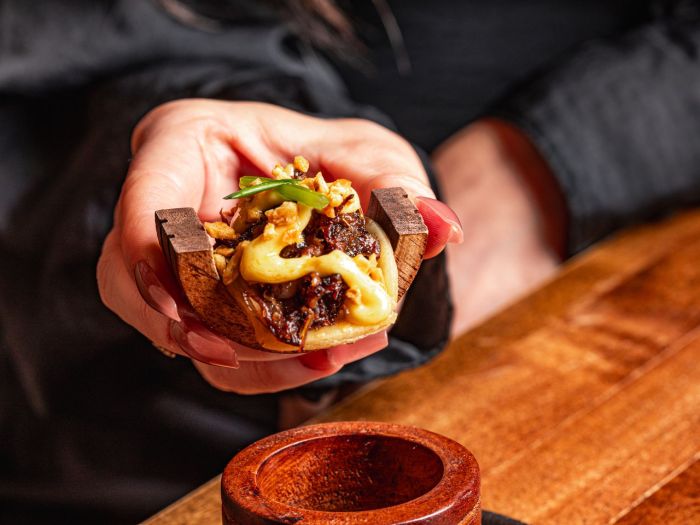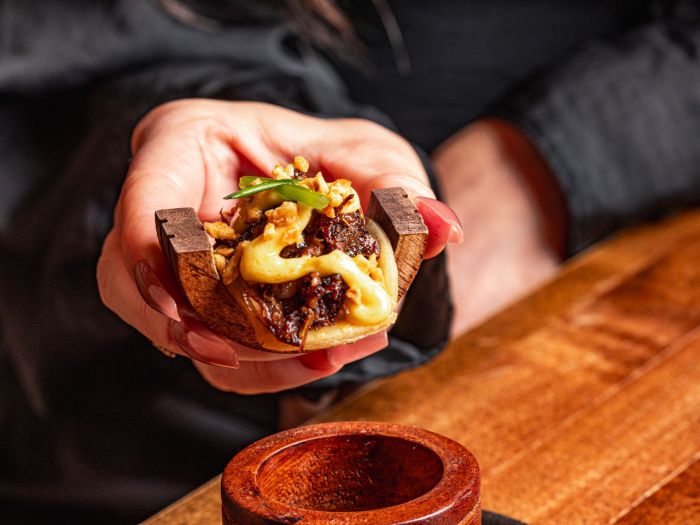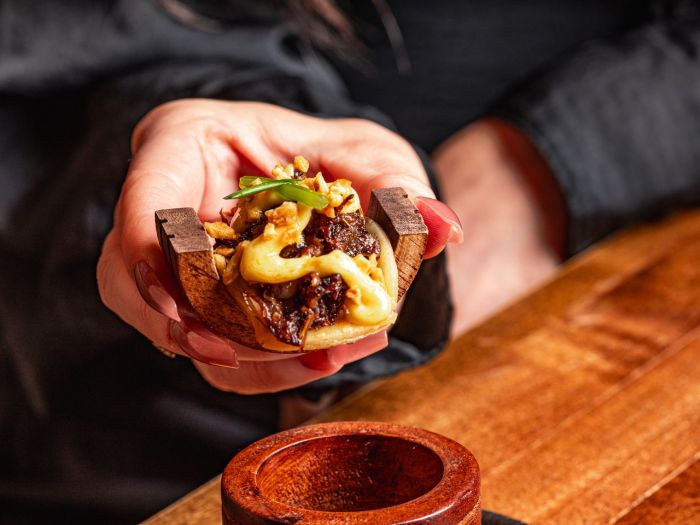Top things to do in Valencia: From bustling markets to historic landmarks, Valencia offers a captivating blend of culture, cuisine, and vibrant energy. This guide dives deep into the must-see attractions, delicious delicacies, and unforgettable experiences waiting for you in this Spanish gem.
This comprehensive exploration covers everything from the city’s rich history and geography to practical tips for planning your trip, including transport, accommodation, and even day trips to nearby destinations. We’ll also delve into Valencia’s famed culinary scene, highlighting its local specialties and the best places to savor them.
Introduction to Valencia
Valencia, a vibrant city nestled on the eastern coast of Spain, boasts a rich tapestry of history, culture, and culinary delights. From its stunning architecture to its passionate festivals, Valencia offers a unique experience for every visitor. Its Mediterranean climate and proximity to the sea create an idyllic atmosphere, perfect for exploring both the city’s historic heart and its beautiful surroundings.The city’s cultural significance is deeply rooted in its past, with influences from various civilizations shaping its unique identity.
A blend of Roman, Moorish, and later Spanish legacies are evident throughout the city’s architecture and traditions, offering a fascinating glimpse into its evolution.
Geographical Location and Surroundings
Valencia is situated on the Mediterranean coast of Spain, in the Valencian Community. The city’s location provides access to stunning beaches, rolling hills, and lush countryside. Its proximity to the sea is a defining characteristic, influencing the city’s climate and lifestyle. The surrounding areas offer opportunities for day trips to picturesque villages and natural parks, providing a contrast to the bustling city center.
The region is renowned for its agricultural production, especially citrus fruits, which are cultivated in the surrounding fertile lands.
Cultural Significance
Valencia’s cultural significance is deeply embedded in its historical heritage. The city has witnessed the rise and fall of empires, leaving its mark on the architecture, traditions, and artistic expressions. The legacy of these civilizations is visible in the city’s impressive historical sites, such as the Valencia Cathedral, the City of Arts and Sciences, and the Central Market.
Valencia is renowned for its vibrant cultural festivals, including the Fallas festival, a celebration of art and tradition.
Historical Context
Valencia’s history spans centuries, marked by significant events and influential figures. From its Roman origins to its flourishing during the Moorish era, the city has experienced periods of growth and decline. The city’s strategic location on the Mediterranean Sea made it a vital trading hub, further enhancing its development and importance. The city’s architectural landmarks, like the Valencia Cathedral, showcase its evolving history.
The transition from Roman rule to Moorish domination and then to the rise of the Kingdom of Valencia significantly influenced its development and cultural identity. The city’s rich historical past is evident in its architectural heritage and traditions, providing a captivating narrative for visitors to explore.
City Development
Valencia’s development has been shaped by a confluence of factors, from its strategic location to the evolution of its economy. Early development was largely driven by trade and agriculture. The discovery of new sea routes and the establishment of trade connections were key factors in its growth. The establishment of industries and the development of infrastructure, including transportation networks, further contributed to its expansion.
The city’s modern development reflects its embrace of innovation and its continued commitment to cultural preservation. The construction of modern architectural marvels, such as the City of Arts and Sciences, demonstrates its dynamism and ambition.
Key Attractions
Valencia offers a plethora of attractions for visitors. The city’s diverse attractions cater to various interests, from history buffs to art enthusiasts. From the historic Turia Gardens to the stunning City of Arts and Sciences, the city offers a wealth of opportunities for exploration and discovery. The combination of historical sites, modern architecture, and cultural events makes Valencia a compelling destination.
“Valencia is a city that blends the ancient with the modern, offering a unique experience for every visitor.”
Popular Tourist Activities
Valencia offers a vibrant mix of historical landmarks, cultural experiences, and natural beauty, catering to diverse interests. From exploring ancient architecture to enjoying the Mediterranean sun, there’s something for everyone in this Spanish city. This section delves into the most popular tourist activities, highlighting options for families, couples, and solo travelers alike.Valencia’s rich tapestry of attractions provides a compelling experience for visitors.
The city balances its historical significance with modern amenities, creating a unique and engaging destination.
Must-See Attractions for First-Time Visitors
Valencia boasts a collection of iconic landmarks and cultural gems that should be on every first-time visitor’s itinerary. The City of Arts and Sciences, a futuristic complex of museums and entertainment venues, is a must-see, showcasing cutting-edge architecture and interactive exhibits. The impressive Valencia Cathedral, a blend of Gothic and Renaissance styles, provides a glimpse into the city’s rich history.
Furthermore, the Central Market offers a vibrant sensory experience, showcasing local produce and delicacies.
Activities for Families
Families will find numerous engaging activities in Valencia. The Oceanogràfic, a renowned aquarium, provides a captivating underwater world for children and adults alike. The Bioparc Valencia, a zoological park, offers a diverse range of animal encounters. The Turia Gardens, a sprawling green space, provide ample opportunities for picnics, strolls, and bike rides. These activities are suitable for all ages and offer a blend of educational and recreational experiences.
Options for Couples
Couples can enjoy a romantic stroll along the Turia Gardens, taking in the scenic views and tranquil atmosphere. A leisurely dinner at a traditional restaurant, followed by a captivating performance at the Palau de les Arts Reina Sofía, can create unforgettable moments. Exploring the narrow streets of the El Carmen neighborhood, discovering hidden plazas, and indulging in local cuisine can also provide an intimate and memorable experience.
Options for Solo Travelers
Solo travelers can explore Valencia’s vibrant culture at their own pace. Visiting the Central Market, experiencing the local atmosphere, and enjoying a leisurely coffee at a café provide opportunities for introspection and connection. Exploring the city’s museums, such as the Fallas Museum, offers a deep dive into local traditions and art. Alternatively, taking a leisurely bike ride along the Turia Gardens, enjoying the peaceful surroundings, can be a perfect solo activity.
Activities Categorized by Type
- Museums: Valencia boasts a diverse collection of museums, from the City of Arts and Sciences to the Fallas Museum, offering insights into art, science, and local traditions. These museums cater to different interests, providing educational and enriching experiences.
- Parks: The Turia Gardens are a prime example of Valencia’s beautiful green spaces. These expansive gardens offer opportunities for relaxation, recreation, and enjoying the city’s scenic beauty. The Bioparc Valencia is also a popular option for those seeking nature and wildlife.
- Beaches: Valencia’s beaches, though slightly further outside the city center, provide a refreshing escape from the urban bustle. The city’s proximity to the Mediterranean coast makes it easy to access various beaches for swimming, sunbathing, and enjoying the coastal atmosphere.
Activity Details
| Activity | Duration (approx.) | Cost (approx.) |
|---|---|---|
| City of Arts and Sciences | 2-4 hours | €15-€30 |
| Oceanogràfic | 4-6 hours | €25-€45 |
| Turia Gardens Stroll | 1-3 hours | Free |
| Central Market Visit | 1-2 hours | Free (food costs vary) |
| Valencia Cathedral | 1-2 hours | Free |
Culinary Delights: Top Things To Do In Valencia
Valencia boasts a vibrant culinary scene deeply rooted in its rich history and agricultural bounty. The city’s cuisine showcases the freshest local ingredients, resulting in dishes that are both flavourful and authentic. From the fragrant aromas wafting from tapas bars to the hearty portions of traditional stews, the culinary journey in Valencia is a sensory delight.The region’s agricultural heritage significantly influences the local cuisine.
Abundant citrus fruits, rice paddies, and diverse vegetables form the foundation of many dishes. This agricultural abundance is not just a source of ingredients; it is a reflection of the region’s culture and the way of life. This strong connection to the land gives Valencian food a unique character.
Local Specialties
Valencian cuisine is renowned for its diverse array of local specialties. These dishes often showcase the region’s abundant seafood, including fresh catches from the Mediterranean. Furthermore, the area’s rich agricultural heritage influences the variety of vegetables and fruits found in traditional dishes.
Paella and Other Traditional Dishes
Paella, a national Spanish dish, holds a special place in Valencian culinary traditions. Its variations, utilizing seafood, vegetables, or meat, reflect the region’s agricultural abundance and diverse influences. Beyond paella, other traditional dishes like “fideos” (a type of pasta dish) and “horchata” (a refreshing rice-based drink) are essential components of the local culinary experience.
Restaurant Experiences
Valencia offers a wide selection of restaurants catering to various tastes and budgets. From bustling tapas bars to elegant fine-dining establishments, there is something for everyone. Experiencing the vibrant atmosphere of a traditional “chiringuito” (beachside bar) provides a unique perspective of the local food culture. Exploring local markets, such as the Mercado Central, allows you to witness the freshness and variety of ingredients firsthand, and to understand the importance of these markets in the Valencian culinary landscape.
Food Culture and Customs
The food culture in Valencia extends beyond the dishes themselves. Sharing meals with family and friends is a significant part of social life, often accompanied by lively conversations and shared laughter. The custom of enjoying tapas, small plates of food, with drinks, is a quintessential part of the evening routine.
Traditional Valencian Dishes
Valencian cuisine offers a delightful array of traditional dishes. Here is a table showcasing five popular choices:
| Dish | Ingredients | Preparation Method |
|---|---|---|
| Paella Valenciana | Chicken, rabbit, snails, saffron rice, vegetables (e.g., peas, beans, tomatoes), olive oil. | Sautéing the protein and vegetables, then adding saffron rice and broth. The rice is cooked until it is fluffy and the liquid is absorbed. |
| Fideuà | Seafood (e.g., shrimp, clams, mussels), seafood broth, noodles (fideos), vegetables (e.g., tomatoes, onions, garlic). | A paella-like dish using noodles instead of rice. The seafood is cooked in a broth with vegetables, then the noodles are added and cooked until tender. |
| Escudella | Meat (e.g., pork, beef), vegetables (e.g., potatoes, carrots, turnips), beans, broth. | A hearty stew with various vegetables and meats simmered in a rich broth until the ingredients are tender. |
| Horchata | Tiger nuts, water, sugar. | Tiger nuts are ground and mixed with water, then sweetened with sugar. The resulting drink is often served chilled. |
| Coca Valenciana | Flour, water, oil, salt, various fillings (e.g., tomato, onion, seafood). | A savory flatbread, often filled with various ingredients. It is baked until golden brown. |
Cultural Experiences
Valencia boasts a rich tapestry of artistic and cultural heritage, woven from centuries of history and diverse influences. From its vibrant festivals to its world-class museums, the city offers a captivating journey through time and creativity. The city’s commitment to preserving its traditions and fostering innovation creates a unique and engaging cultural experience for visitors.Valencia’s cultural scene is deeply intertwined with its identity.
The city’s architecture, art, and celebrations reflect the unique blend of historical influences that have shaped its character. This fusion of traditions and modern expressions is evident in the city’s museums, galleries, and the spirited energy of its festivals.
Artistic and Cultural Heritage
Valencia’s artistic heritage is multifaceted, encompassing various art forms from painting and sculpture to architecture and music. The city’s architecture, from the historic City of Arts and Sciences to the charming old town, showcases its evolution through time. A strong connection to the Mediterranean influences is present in the region’s artistic expressions.
Key Cultural Institutions
Valencia is home to numerous museums and galleries that showcase its artistic and cultural heritage. These institutions offer a diverse range of experiences, from exploring ancient artifacts to discovering contemporary works of art. They play a crucial role in preserving and promoting Valencia’s rich cultural identity.
- The City of Arts and Sciences: A modern architectural marvel, encompassing the Hemisfèric, the Oceanogràfic, and the Science Museum. These buildings showcase cutting-edge design and technology, while also offering engaging exhibits and experiences, particularly for families and science enthusiasts.
- The Fallas Museum: Dedicated to the iconic Fallas festival, this museum delves into the history, traditions, and craftsmanship of the festival, allowing visitors to appreciate the artistic expressions that define this cultural celebration.
- The IVAM (Instituto Valenciano de Arte Moderno): A leading museum dedicated to modern and contemporary art. Its collection includes works from important Spanish and international artists, offering a glimpse into the evolution of artistic movements.
Local Festivals and Celebrations
Valencia’s vibrant cultural calendar is punctuated by numerous festivals, each with its own unique traditions and significance. These celebrations are deeply ingrained in the city’s identity, offering a powerful demonstration of Valencian culture and heritage.
- Fallas Festival: A spectacular celebration held annually, characterized by elaborate and often satirical sculptures known as ‘ninots’. These artworks are created by local artisans and are showcased in the streets, highlighting the city’s artistic talent and festive spirit. This festival draws attention from locals and tourists alike.
- Valencia’s Holy Week: A profound and solemn celebration marked by religious processions and devotion, offering a different perspective on Valencia’s rich cultural landscape. The displays of faith and artistry are particularly moving during this period.
The Role of Art and Culture in Valencia’s Identity
Art and culture are integral components of Valencia’s identity. They reflect the city’s history, its people, and its aspirations. These elements enrich the city’s character and provide a distinct sense of place, making it a unique destination. The city’s embrace of creativity is evident in its diverse artistic expressions.
Museum and Gallery Comparison
| Museum/Gallery | Collection Focus | Notable Exhibitions |
|---|---|---|
| IVAM | Modern and contemporary Spanish and international art | Recurring exhibitions featuring established and emerging artists, often with a focus on specific themes or movements |
| City of Arts and Sciences | Science, technology, oceanography, and culture | Rotating exhibits related to the respective areas of focus, such as special exhibitions on marine life or scientific advancements |
| Fallas Museum | Fallas festival’s history, traditions, and craftsmanship | Permanent displays showcasing the evolution of the festival, with occasional special exhibitions focusing on particular aspects of the celebrations, such as the art of creating ninots. |
Practical Information for Visitors
Valencia, a vibrant city brimming with culture and history, welcomes visitors with open arms. Navigating the city, choosing accommodation, and understanding the local customs are key to a smooth and enjoyable trip. This section provides practical information to ensure your experience in Valencia is seamless and unforgettable.Planning ahead is crucial for a successful trip. Knowing your transportation options, accommodation choices, and local customs will help you feel comfortable and in control.
From navigating the metro to understanding local etiquette, this section equips you with the essential details to make the most of your time in Valencia.
Transportation
Getting around Valencia is straightforward and efficient. The city boasts an extensive public transportation network, including a metro system that connects major destinations.
- Metro: The Valencia metro system is a reliable and cost-effective way to get around. It offers a wide range of routes, covering most parts of the city. Purchase a travel card for convenient and discounted travel. Note that schedules and routes may vary, so checking the Valencia Metro website before your trip is recommended.
- Buses: Valencia’s bus network extends beyond the metro’s reach, providing access to outlying areas and suburbs. Buses are an affordable option for longer journeys and connecting to specific neighborhoods.
- Taxis: Taxis are readily available throughout the city. Be aware that taxi fares may vary, and it’s advisable to agree on the price beforehand. Using ride-sharing apps is another convenient option.
- Walking: Valencia is a walkable city, especially the historic center. Exploring the city on foot allows for a more immersive experience and provides opportunities to discover hidden gems.
For day trips to surrounding areas, consider using regional trains or buses. Many towns and villages within a short distance of Valencia are easily accessible via public transport. Pre-booking tickets or checking schedules beforehand can prevent delays.
Accommodation
Valencia offers a wide range of accommodation options to suit various budgets and preferences.
- Hotels: From budget-friendly options to luxury hotels, Valencia caters to diverse needs. Many hotels are located centrally, allowing easy access to attractions. Look for hotels with amenities such as pools, spas, or gyms for a complete experience.
- Apartments/Airbnb: For a more home-like experience, consider renting an apartment or using Airbnb. These options often provide more space and kitchen facilities, ideal for longer stays.
- Hostels: Budget-conscious travelers will find hostels a great option, especially for social travelers. These establishments provide affordable accommodation with communal areas for socializing.
Booking in advance, especially during peak season, is recommended to secure your preferred accommodation. Read reviews and compare prices before making a final decision.
Visa Requirements
Visa requirements for visiting Valencia depend on your nationality. Check the Spanish embassy or consulate website for specific details.
- Citizens of EU/EEA countries: EU/EEA citizens generally do not require a visa to enter Spain for short stays.
- Citizens of other countries: Citizens of other countries should consult the Spanish embassy or consulate website for specific visa requirements.
Ensure you meet all visa requirements well in advance of your trip to avoid any unforeseen complications.
Currency
The currency used in Spain, including Valencia, is the Euro (€). Exchanging currency or using credit cards are common practices.
| Category | Details |
|---|---|
| Currency | Euro (€) |
| Payment Methods | Credit cards, debit cards, ATMs are widely accepted. |
Useful Phrases
Learning a few basic Spanish phrases can enhance your experience.
Hola (Hello), Gracias (Thank you), Por favor (Please), Adiós (Goodbye), ¿Cuánto cuesta? (How much does it cost?)
Learning these simple phrases will help you communicate with locals and enhance your experience in Valencia.
Day Trips and Excursions
Valencia offers a plethora of fantastic day trips, allowing you to explore the rich history and culture of the surrounding region. From charming medieval towns to breathtaking natural landscapes, these excursions provide a unique perspective on the Iberian Peninsula beyond the city limits. These trips provide a chance to escape the bustle of Valencia and immerse yourself in different environments.Exploring beyond Valencia provides a deeper understanding of the region’s historical tapestry and diverse natural beauty.
These excursions offer a refreshing change of pace from the city’s attractions, while still providing engaging experiences.
Potential Day Trip Destinations
Exploring the region surrounding Valencia unveils a multitude of hidden gems. Nearby towns and villages offer a captivating blend of history, culture, and natural beauty. These day trips are a great way to experience the diverse landscapes and historical sites that surround Valencia.
Valencia boasts amazing sights, from the stunning architecture to the vibrant markets. However, if you’re flying into the area, keep in mind recent disruptions at Ronald Reagan Washington National Airport, including closures, cancellations, and delays. Check out the latest updates on this situation at ronald reagan washington national airport crash closure cancellation delays before you book your trip.
Regardless of any travel hiccups, Valencia still offers fantastic experiences for tourists.
- Morella: A medieval hilltop town steeped in history, Morella boasts impressive architecture, including the imposing Morella Castle, a significant historical landmark. The castle’s intricate design and strategic location provide insights into the region’s defensive structures and past conflicts. The town is also renowned for its annual cultural festivals and local cuisine.
- Sagunto: Sagunto, a coastal city with a rich history, is known for its ancient Roman ruins. The city boasts remnants of a significant Roman settlement, showcasing the region’s connection to the Roman Empire. Visitors can explore the archaeological site, learn about the city’s past, and appreciate the enduring legacy of Roman civilization. The town is also a popular spot for beach lovers, offering a pleasant coastal experience alongside its historical appeal.
- Teruel: This city is famous for its stunning architectural and natural beauty. Teruel is renowned for its impressive Aljafería Palace, a remarkable example of Moorish architecture. The palace, a testament to the region’s rich history, offers a glimpse into the artistic and architectural prowess of the past. The city also provides stunning views of the surrounding landscape.
Transportation Options for Day Trips
Several transportation options facilitate convenient and efficient day trips from Valencia. Public transportation, such as trains and buses, provide accessible and cost-effective methods to reach various destinations. Rental cars offer flexibility for exploring at your own pace. Pre-booked tours provide another option, ensuring a guided and comfortable experience.
- High-Speed Train: High-speed trains are a swift and convenient option for reaching destinations like Sagunto or Teruel, significantly reducing travel time compared to other methods. These trains are ideal for those seeking a quick and efficient journey.
- Buses: Buses offer a more affordable alternative to trains for reaching destinations like Morella, providing an economical option for exploring the surrounding areas. This option is also ideal for those seeking a more flexible journey, as bus schedules often accommodate various needs.
- Rental Cars: Rental cars provide flexibility for exploring at your own pace. They allow you to explore areas outside of major transportation routes, enabling a more personalized and adaptable experience.
Attractions and Activities for Day Trips
A variety of attractions and activities cater to different interests during day trips. These excursions provide opportunities for historical exploration, cultural immersion, and natural appreciation.
- Exploring Historical Sites: Sites like the Morella Castle or Sagunto’s Roman ruins provide insights into the region’s rich history. These sites offer a unique opportunity to experience the past firsthand.
- Cultural Experiences: Visiting towns like Teruel allows for cultural immersion, including experiencing local festivals, exploring unique architecture, and indulging in local cuisine. This is a fantastic opportunity to delve into the region’s traditions and customs.
- Enjoying Natural Landscapes: Many destinations offer opportunities to enjoy scenic walks, hikes, or simply appreciating the surrounding natural beauty. This aspect of the trip offers relaxation and enjoyment of the landscape.
Day Trip Details
The following table Artikels potential day trips from Valencia, providing details on destination, duration, and estimated costs.
Valencia boasts stunning architecture and vibrant markets, but planning your trip can be easier with a European airline’s air-rail package, like those detailed in this helpful guide european airlines air rail packages how to use one to travel. You can save money and time by booking your flights and train travel together, making it perfect for exploring Valencia and other cities on your itinerary.
From the City of Arts and Sciences to the historic El Carmen neighborhood, Valencia offers a wealth of experiences.
| Destination | Duration (approx.) | Estimated Cost (approx.) |
|---|---|---|
| Morella | Full Day | €30-€50 (including transportation and entrance fees) |
| Sagunto | Half Day | €20-€40 (including transportation and entrance fees) |
| Teruel | Full Day | €40-€70 (including transportation and entrance fees) |
Accommodation Options

Valencia offers a diverse range of accommodation options to suit every budget and preference. From charming boutique hotels to spacious apartments, you’ll find something perfect for your trip. Understanding the nuances of each type will help you choose the best fit for your needs and experience the city to the fullest.Choosing the right accommodation is crucial for a comfortable and enjoyable stay.
Factors like location, amenities, and price point significantly impact your overall experience. Whether you prefer the convenience of a hotel or the flexibility of an apartment, Valencia caters to a variety of tastes.
Hotel Accommodation
Hotels provide a range of services, from housekeeping and concierge services to restaurant facilities. They offer a convenient and often comfortable stay, especially for those prioritizing ease of access to attractions and amenities. However, hotels can sometimes be more expensive than other options.
- Pros: Convenience, often includes breakfast, various amenities like pools or spas, 24/7 front desk service, usually located in central areas, good for tourists unfamiliar with the city.
- Cons: Can be more expensive than other options, limited flexibility in terms of cooking or preparing meals, sometimes less privacy compared to apartments.
- Examples: Luxury hotels like the Hotel Arts Valencia offer upscale accommodations and services. Mid-range hotels like the Hotel Central provide a comfortable and convenient stay. Budget-friendly options are also readily available.
Apartment Rentals
Apartments offer more space and flexibility than hotels, allowing you to cook your own meals and potentially save money. They’re ideal for families or groups looking for a home-like experience. However, you’ll need to be prepared for the added responsibility of managing your own accommodation.
- Pros: More space and privacy than hotels, flexibility to prepare your own meals, often better value for money compared to hotels, especially for longer stays.
- Cons: Requires some self-management like cleaning and laundry, might not be centrally located, potentially less convenient for exploring the city in comparison to a hotel.
- Examples: Airbnb offers a wide selection of apartments ranging from studios to large family homes. VRBO and similar platforms also provide many options.
Other Lodging Options
Valencia also has a variety of other lodging options to consider, catering to diverse needs and preferences. These options offer unique experiences and often provide a more affordable alternative to hotels or apartments.
Valencia boasts amazing sights, from its historical architecture to vibrant markets. Thinking about a trip? You could even incorporate some incredible Marriott Bonvoy moments Las Vegas experiences, like a thrilling show or a luxurious spa day, into your itinerary. These unique experiences, part of the marriott bonvoy moments las vegas experiences , add a layer of excitement to your Valencia exploration.
Ultimately, exploring Valencia’s rich culture and history is a must!
- Hostels: Ideal for budget-conscious travelers, offering social opportunities and shared spaces. Often located in central areas, making it easy to explore the city.
- Boutique Hotels: Combining the charm of a smaller hotel with a personalized experience. Often located in unique buildings or areas, offering a more intimate stay.
- Guesthouses: Provide a more personal and welcoming atmosphere. Typically smaller establishments offering a home-like environment, often with a local feel.
Pricing and Availability
Accommodation prices in Valencia vary significantly based on the type of accommodation, location, and time of year. During peak tourist seasons, prices tend to be higher. Booking in advance is recommended to secure your preferred accommodation.
| Accommodation Type | Features | Price Range (Example) |
|---|---|---|
| Luxury Hotels | High-end amenities, premium services, central locations | €200+ per night |
| Mid-range Hotels | Comfortable rooms, basic amenities, good locations | €100-€200 per night |
| Apartments | Space, kitchen facilities, flexibility | €50-€150 per night (depending on size and amenities) |
| Hostels | Budget-friendly, social atmosphere, shared rooms | €20-€50 per night |
Shopping and Retail Experiences
Valencia boasts a vibrant shopping scene, blending traditional markets with modern retail outlets. From the bustling stalls of the Central Market to the stylish boutiques lining the city’s pedestrian streets, there’s something for every shopper. This exploration delves into the unique offerings and experiences available, guiding you through the best places and times to discover Valencia’s treasures.The city’s shopping landscape reflects its rich history and modern spirit.
Unique shops and markets offer a wide array of goods, from local crafts and artisan products to international brands. Understanding the different shopping areas and their specializations can enhance your shopping experience, allowing you to find the perfect items.
Shopping Areas and Specialties
Valencia’s diverse shopping areas cater to various tastes and budgets. Knowing the specific offerings of each area helps you make the most of your time.
- Central Market (Mercado Central): This iconic market is a sensory experience, overflowing with fresh produce, seafood, cured meats, and local delicacies. The vibrant atmosphere, the sights, and sounds of the bustling stalls create a truly unforgettable shopping experience. It’s a great place to sample local products and pick up fresh ingredients for your culinary adventures in Valencia.
- El Carmen neighborhood: This historic neighborhood is home to a collection of independent boutiques, art galleries, and vintage shops. Discover unique clothing items, handcrafted jewelry, and one-of-a-kind souvenirs. The narrow streets and charming atmosphere contribute to a delightful shopping experience.
- The City Center: Large department stores and international brands are concentrated in the city center. Here, you’ll find everything from high-street fashion to electronics. This area offers convenience and a wide range of choices for those seeking popular brands.
Best Times to Visit
Timing your visits to Valencia’s markets and shops can significantly impact your experience.
- Markets: Early mornings are ideal for markets, when the stalls are brimming with fresh produce and the atmosphere is lively. Later in the day, you might find better prices on certain items, but the energy level might be lower.
- Shops: Weekdays generally offer more tranquility and fewer crowds compared to weekends, making it a great time to browse without the pressure of a busy atmosphere. Many shops are open in the late afternoon, offering convenient shopping hours for those who prefer a more relaxed pace.
Comparison Table of Shopping Areas
| Shopping Area | Atmosphere | Unique Products |
|---|---|---|
| Central Market | Bustling, vibrant, sensory overload | Fresh produce, seafood, cured meats, local delicacies |
| El Carmen | Charming, historic, independent | Unique clothing, handcrafted jewelry, vintage items, art |
| City Center | Modern, diverse, convenient | International brands, high-street fashion, electronics |
Events and Festivals
Valencia pulsates with vibrant energy, particularly during its numerous festivals and events. These celebrations are deeply rooted in the city’s history and culture, showcasing the unique traditions and artistic expressions of its people. From religious processions to vibrant street parties, Valencia’s events offer a glimpse into the heart and soul of the community.The festivals in Valencia are more than just parties; they are living testaments to the city’s rich heritage and enduring spirit.
Each celebration carries with it a unique story, reflecting the historical and social contexts that have shaped Valencia’s identity. These events draw in not only locals but also tourists from around the world, creating a truly international atmosphere of celebration and joy.
Upcoming Events and Festivals
Valencia’s calendar is packed with events throughout the year, each with its own unique charm and significance. The following table highlights some upcoming festivities, offering a taste of what’s in store for visitors and residents.
| Date | Location | Description |
|---|---|---|
| Late March/Early April | Various locations throughout the city | The Fallas festival, a vibrant celebration of Valencian culture, is a key event on the calendar. It includes elaborate firework displays, parades, and the burning of giant papier-mâché figures. The festival is steeped in tradition, dating back to the 19th century. |
| Mid-May | Valencia City Center | Valencia celebrates its patron saint, with a religious procession, prayers, and community gatherings. This festival emphasizes the city’s devotion and religious traditions. |
| August | Various locations throughout the city | The city hosts various cultural events and activities during the summer months, including concerts, exhibitions, and theatrical performances, offering a rich array of artistic experiences. |
| October | Various locations throughout the city | Valencia hosts a range of events throughout the autumn, including fairs, concerts, and exhibitions. These events reflect the city’s rich cultural heritage and artistic expressions. |
Historical Context of Events
Many of Valencia’s festivals have deep historical roots, often tracing back to religious traditions, agricultural cycles, or historical events. For example, the Fallas festival’s origins can be traced to ancient fire festivals, highlighting the importance of community and celebration in Valencian society. These events have evolved over time, incorporating new elements while retaining their core values.
Significance of Events to Local Culture
These events are integral to Valencian culture, serving as a vital connection to traditions, values, and community. The festivities create a sense of shared identity and belonging, fostering social interaction and a strong sense of local pride. They also offer a platform for artistic expression, showcasing the creativity and talent within the community.
Activities and Attractions Associated with Events
The events in Valencia offer a wide array of activities and attractions. Visitors can immerse themselves in the vibrant atmosphere, witness the elaborate processions, experience the delicious food, and participate in the festivities. Many of these events include parades, concerts, firework displays, and community gatherings. Local crafts and products are often showcased during the festivals, providing a unique opportunity to interact with local artisans and purchase unique souvenirs.
Illustrations and Visuals
Valencia, a city brimming with history and vibrant culture, offers a feast for the eyes. Capturing its essence in images requires understanding the city’s unique architectural styles, atmospheric qualities, and the mood each location evokes. Visuals should transport viewers to the heart of Valencia, showcasing its beauty and energy.To effectively communicate the charm of Valencia, imagery must be carefully curated.
High-quality photographs and illustrations will be essential in conveying the city’s unique character and spirit, appealing to a diverse audience.
Architectural Styles and Aesthetics
Valencia boasts a fascinating mix of architectural styles, from the ancient to the modern. Images should showcase the interplay of these styles. The historic city center, with its narrow, winding streets and traditional Valencian houses, presents a captivating backdrop for images. These structures often feature terracotta roofs, wrought-iron balconies, and intricate details. The modern skyline, punctuated by contemporary buildings and skyscrapers, should also be captured, demonstrating the city’s ongoing evolution.
Consider capturing the contrast between the old and new, illustrating the city’s dynamic character.
Visual Elements for Images
Images should focus on capturing the essence of Valencia, showcasing its diverse elements. Include the following in your imagery:
- Sunlight and Shadows: Valencia enjoys abundant sunlight, creating dramatic shadows that play across the city’s buildings and streets. Images should capture these contrasting light and shadow effects, showcasing the city’s character in different light conditions.
- Color Palette: The color palette should reflect the vibrancy of Valencia’s culture. Images should include warm tones, such as terracotta, oranges, and yellows, representative of the traditional architecture. Include touches of vibrant blues and greens, capturing the city’s parks and gardens.
- Details and Textures: Images should emphasize the intricate details of Valencia’s architecture. Focus on textures, such as the rough surfaces of stone buildings, the smooth curves of modern structures, and the intricate patterns of ceramic tiles. Show the richness of the city’s craftsmanship.
- People and Activities: Images should depict the daily life and activities in Valencia. Include people enjoying the city’s parks, plazas, and markets. Capture the vibrant energy of the city through the actions and expressions of its residents. Include tourists interacting with the city’s sights, demonstrating the welcoming nature of Valencia.
Mood and Atmosphere, Top things to do in valencia
Images should evoke a range of moods and atmospheres, from the bustling energy of the city center to the serene beauty of its parks. Images should reflect the following:
- Joyful and Vibrant: Images of the City of Arts and Sciences, the Central Market, and the Turia Gardens should evoke a sense of joy and excitement. Capture the lively atmosphere of the city through vibrant colors and energetic people.
- Historic and Serene: Images of the historic city center, the Valencia Cathedral, and the nearby Roman ruins should evoke a sense of history and serenity. Capture the beauty of the city’s architectural details and the tranquility of the streets.
- Modern and Dynamic: Images of the futuristic architecture of the City of Arts and Sciences and the modern skyline should convey a sense of modernity and dynamism. Capture the sleek lines and innovative designs of contemporary buildings.
- Welcoming and Hospitable: Images should showcase the warm and welcoming atmosphere of Valencia. Show interactions between locals and tourists, highlighting the city’s hospitality. The atmosphere should be welcoming and inviting, encouraging viewers to experience Valencia for themselves.
Ambiance of Specific Locations
- Turia Gardens: Images of Turia Gardens should capture the serene and peaceful atmosphere. Focus on the lush greenery, the flowing water features, and the tranquil ambiance of the park. Images should evoke a sense of relaxation and escape from the city’s hustle and bustle.
- Central Market: Images of the Central Market should capture the vibrant and bustling atmosphere. Highlight the colorful produce, the aromatic spices, and the sounds of activity. Images should evoke a sense of excitement and sensory exploration.
Conclusive Thoughts
In conclusion, Valencia offers a diverse tapestry of experiences for every type of traveler. Whether you’re seeking historical immersion, culinary adventures, or cultural enrichment, this vibrant city has something to captivate your senses. From its stunning architecture to its warm hospitality, Valencia promises an unforgettable journey. So, pack your bags and prepare to be amazed!

























